Just at the border we can notice we enter a completely different, wilder world. From an elegant building with shiny floors in San Pedro de Atacama, where the customs officers of Chile stamp our passports for a farewell for the sixth and probably last time on this trip, we get to a small, modest booth with a metal roof, crouched at the foot of the Andean Mountains. This is the border in Bolivia. Near the rusty buckets a little fox wanders. After a while, frightened by our cosmic appearance, it disappears on the horizon of the alpine land, which seen from a distance already promises a new great adventure.
Salvador Dali Desert
150 BOB (approx. 22 USD) per person for an entrance to the Andean Fauna National Reserva Eduardo Avaora and we ride on a sandy road along colorful lagoons and dormant volcanoes. The landscape becomes more and more surreal from minute to minute. And there it is, Salvador Dali Desert in front of us! We have an impression as if we have really entered a painting, in which in a moment a big clock melted on a tree will appear or elephants on long thin legs, walking between chaotically scattered volcanic rocks. The image is complemented by the pale face of the Moon, clearly visible over the Andean ridges. It looks down at at the golden and white sand of Salar de Chalviri, which at one point disappears under the azure surface of the water. In the lagoons the sky is reflected, and on this day it’s insanely blue.



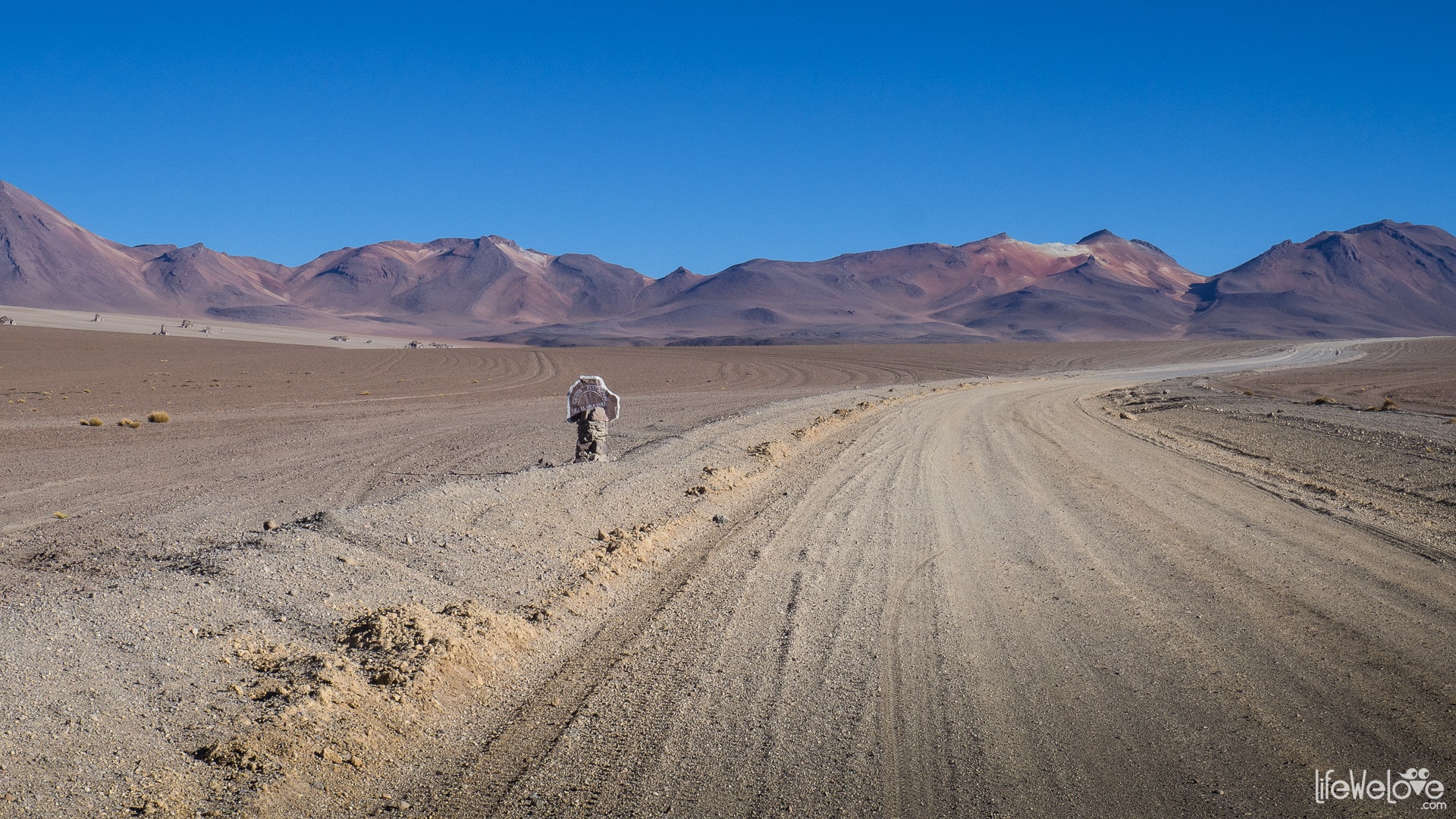

| A few kilometers after crossing the border in Chile, we get to a little building which is the Migracion office in Bolivia. We have our passports stamped there and receive a permit for our stay in Bolivia for 1 month. We want a longer one, but for that we have to apply in some bigger city 1 or 2 days before this one expires. Also, to receive a vehicle import permit we have to go another 80 km to the next custom office. There’s no problem to deal with that on the next day, so we can spend a night by hot springs Termas de Polques. By the way, the custom office where you get the vehicle permit is situated at 5033 m a. s. l. and it’s said to be the highest located custom office in the world. | |
| A simple room in a hotel by Aguas Termales de Polques we receive for 80 BOB, which is 6 USD per person and it also includes a dinner (a soup and vegetarian spaghetti) and breakfast! Not to mention about possibility to bath in thermal hot springs with a view to lagoons and surrounding Andes. A room by Laguna Colorada we rent for 70 BOB (10 USD per person) without food (100 BOB with dinner and breakfast). Further in the alpine village Villa Mar we find a room for 100 BOB (14,5 USD per person) with a bathroom outside with a quick hot shower available on request. |
loading map - please wait...
| Laguna Blanca (The White Lagoon) Laguna Blanca Potosí, Boliwia | |
| Aguas Termas de Polques Termas de Polques Boli | |
| Salvador Dali Desert | |
| Aduana - permit for a vehicle | |
| Viewpoint for the Laguna Colorada Laguna Colorada | |
| Laguna Capina (The Capina Lagoon) Laguna Capina | |
| Gas station in San Cristobal San Cristobal Potosí, Boliwia | |
| Gas station in San Pedro de Atacama San Pedro de Atacama II Región de Antofagasta, Chile | |
Aguas Termas de Polques
A little hotel by the hot springs of Termas de Polques at the altitude 4 400 m a. s. l. offers us a room with supper and breakfast for as little as $6 per person. Yay, we can afford it! This time we don’t have to wrap ourselves like larvae into all cloths and sleeping bags to survive freezing night in a tent (even -16 C ) like it took place not long ago on the alpine passes of northern Argentina. Fortunately, during the day the temperature rises up to +15 C.
At the place we meet Jean, a traveler from Belgia, who for the past half year has been riding across South America on his bicycle. He’s going to travel all the way up to the United States. His route is similar to ours, just in an opposite direction and seems to be more challenging: after all, most of the road will be done with the use of his muscle forces, on the bike. We wonder how many months it will take him to get to California.
The evening frost already pinches our noses, but we cannot resist the temptation of leaving the room to say goodbye to this day under the roof of the sky. It fades away slowly, hiding the sun’s pupil behind the spine of the Andean Mountains, spreading pink braids, on which from time to time dark spots glide. They are migratory birds, Calidris bairdii, gathering for an evening bath in the lagoon.



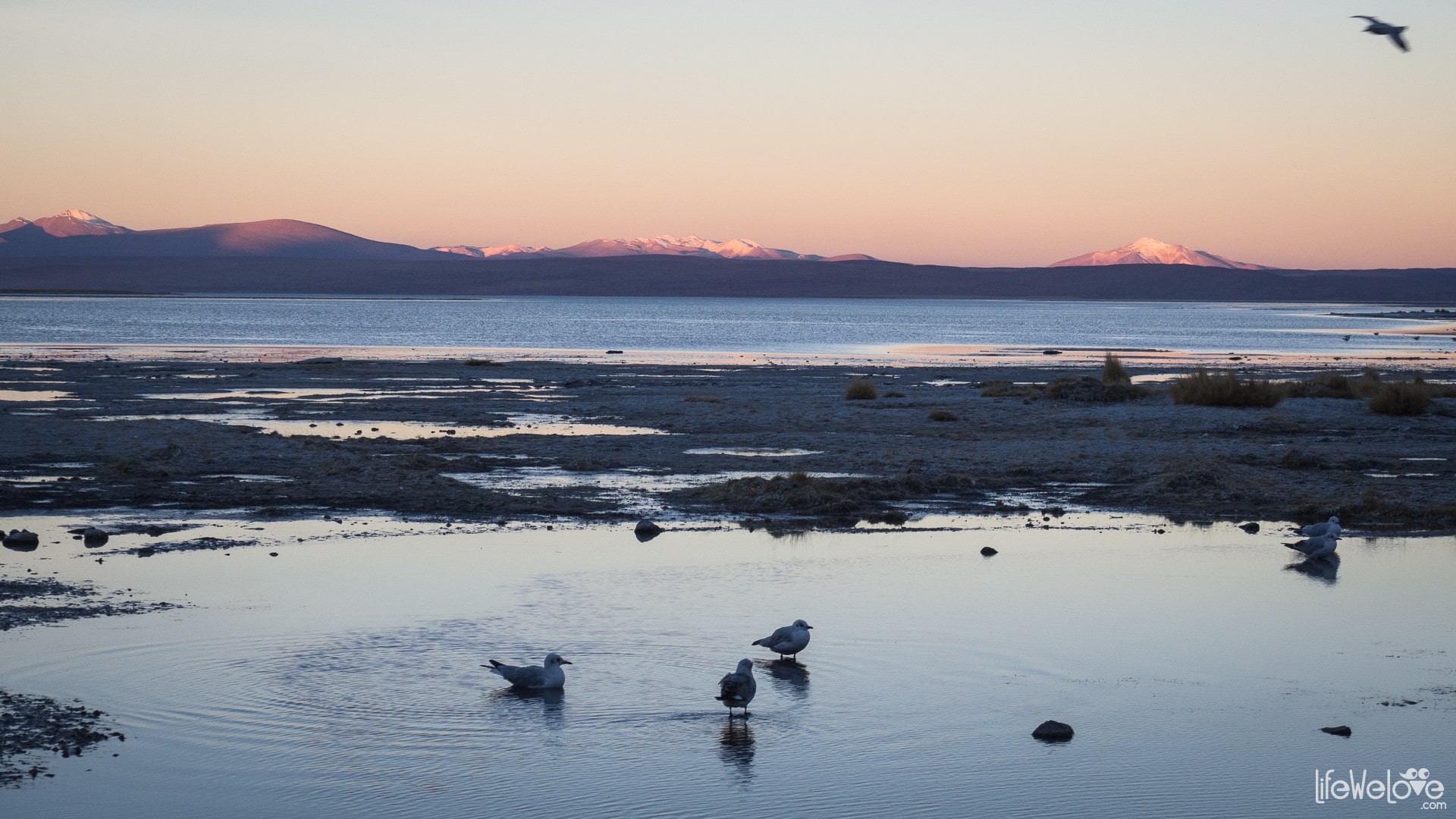
Laguna Colorada
It’s one of these places that always leave the newcomers in a state of delight and astonishment. Yes, here in Bolivia, water of lagoons located at the feet of the majestic Andes shines with the entire palette of colors: from the traditionally blue, to white, green, purple, red, and even black. We don’t manage to see all the lagoons, just keep hearing more and more suggestions of interesting routes from local guides leading their groups of organised tours, very popular here. The Toyota Land Cruiser dominates in this case as a mean of transport and sets off with tourists well before sunrise to take them to the surrounding lagoons and rock attractions.
However, Laguna Colorada beats all the other lagoons without a doubt. Also called the Red Lagoon, set at an altitude of 4 278 m a. s. l. is like the queen of this part of the Andes, in front of which pink flamingos bend their thin, but extremely strong knees. Naturally these birds are white, but astaxanthin, a red pigment produced by several types of algae, and plankton contained in water makes all the magic. This dye is eaten by crustaceans, which in turn are food for flamingos and this way they color them pink. Ah, nature! It is also said that flamingos, despite their seemingly delicate, romantic physiognomy, are one of the hardiest fighters among birds. After all, only few species can withstand the harsh conditions of high mountains so bravely. It happens that at night, when the water freezes, they are stuck in it patiently waiting for the rising sun to melt the silver chains and release their long legs. Then they can spread their wings and rise up, and their spectacular flight is enthusiastically recorded by operators of all kind of lenses.



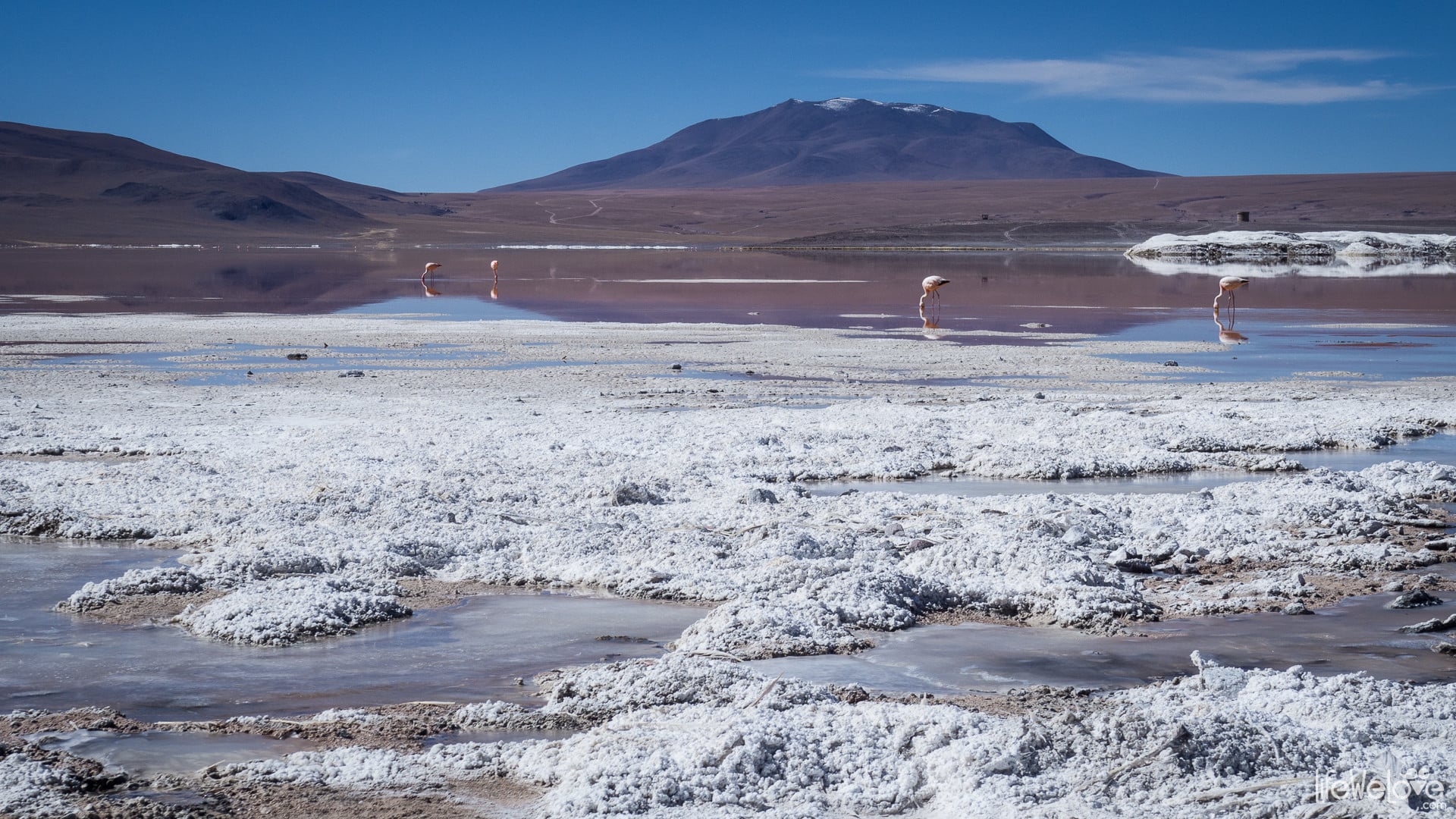






Info about Lagunas Route
| Distance | 460 km |
| Start / finish | San Pedro de Ataca in Chile / Uyuni in Bolivia |
| Surface | Gravel, sand, rocks, sections with deep sand, asphalt full of holes |
| Accessibility | Open all year round but most accessible in the dry season, which lasts from April to October (however maybe temporarily closed due to snowfalls) |
| Hazards | No gas on the way, muddy road in the raining season, very high altitude (up to 5 033 m above sea level), low temperatures at night (up to -20 in June / July) |
| Traffic | Small |
| Attractions on the way | Laguna Verde, Laguna Blanca, Laguna Colorada, Laguna Capina, hot springs, geysers, volcanoes, Salvadore Dali Desert, interesting rock formations, flamingos, vicugnas, lamas |
| Maximum altitude | 5 033 m a.s.l. |
Motorcyclists, drivers - what else to know?
When entering Bolivia from San Pedro de Atacama towards the Lagunas Route, you can choose one of two roads:
- From Laguna Colorada you can go north and see more lagoons and Arbol the Piedra (the Stone Tree). This is a more demanding section with a steep uphill and crossing the river, although conditions depend also on the season and weather.
- The second option is to follow the north-east direction through Villa Mar to Villa Alota and then towards Uyuni via San Cristobal. We chose this route.
At the end of May we didn't encounter a lot of deep sand on the roads. Besides, dozens of 4x4 vehicles from travel companies take these routes every day, so sand, if present, is fairly compacted.
From the Bolivian border to Termas del Polques it was going quite well. Then to the Aduana customs was also good, because the road is maintained by the mining company operating there. Things get worse towards the Laguna Colorada. There is more sand and an unpleasant washboard road with a lot of shaking. Just before the Laguna Colorada, the sand is even deeper, but just on a several or so meter stretch. We didn't have big problems to overcome this. The same is on the way to the viewpoint, but it can also be done without much hassle. Further towards Villa Mar there is a lot of washboard and stones on the road again. Here and there more sand on short sections. And it's like that all the way to Villa Alota. Then you will drive through something that once was an asphalt road and now only holes and dust remained. San Cristobal gets even worse and the holes can't be avoided anymore. Taking all this into account, we are glad that we did this route during the dry season, which officially lasts from April to October, but it's advised by many to go to Laguna Colorada not earlier than in May. At the same time, bear in mind that dry season is a winter time and snow falls may occur and big meltdown. The roads may be temporarily closed and the road will get wet and difficult again. It's always worth asking for current road conditions e.g. in Facebook groups PanAmerican Travelers Associaton or PanAmerican Riders Association or call directly the Reserva Eduardo Abarora's office.
| Fuel for the route
From San Pedro de Atacama in Chile to Uyuni in Bolivia is 460 km, so you will likely have to take an extra fuel. You can get gas in San Pedro de Atacama and further only in San Cristobal or Uyuni. We also heard that you can buy a few liters from someone in Villa Mar or Villa Alota. We took an additional 4-liter canister and two 2-liter plastic bottles. That was more than enough. |
96 1









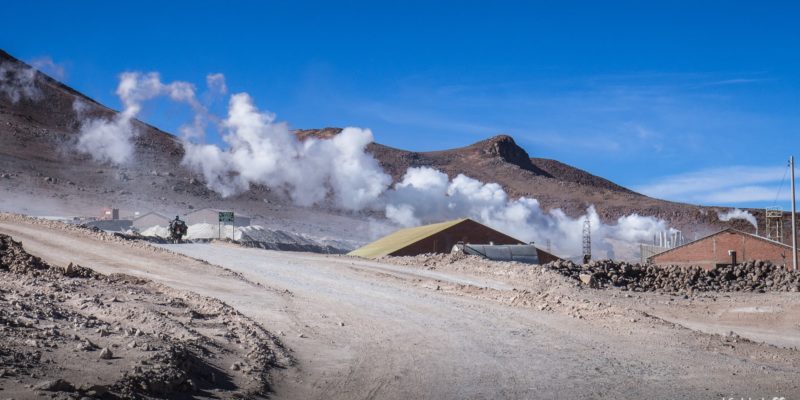





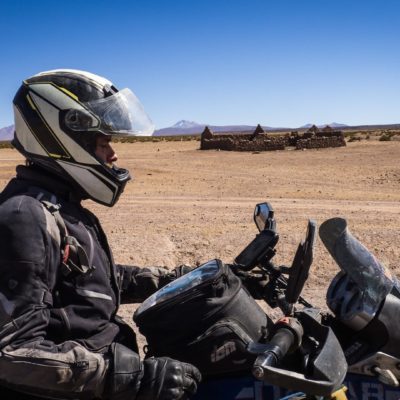

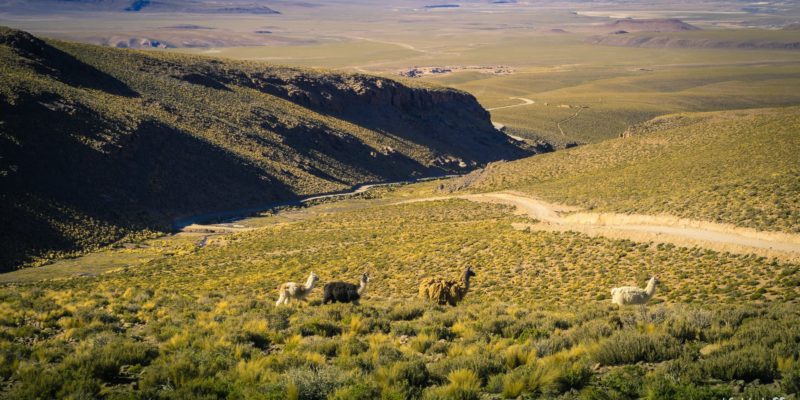








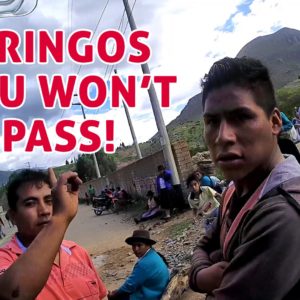



Gricelda Arevalos
Thank you for the very important information, we’re on our way to the Laguna Colorada from Uyini on our GS 1250. Let’s hope the roads are good to go.